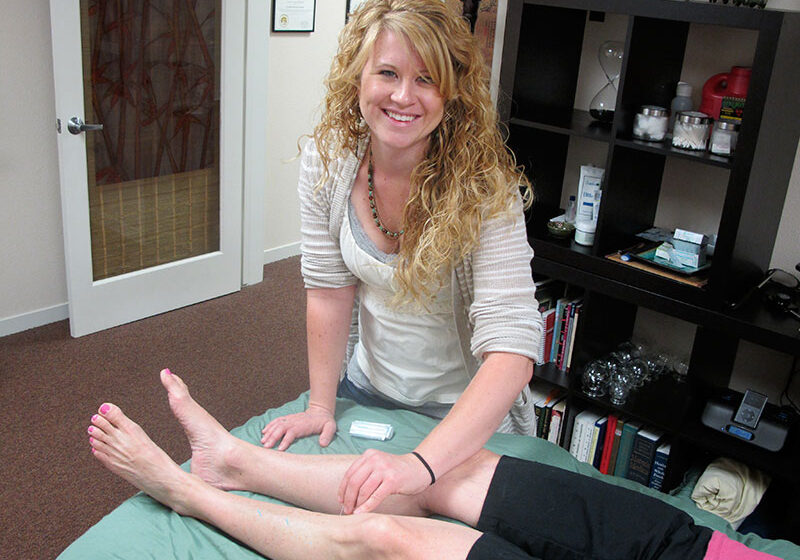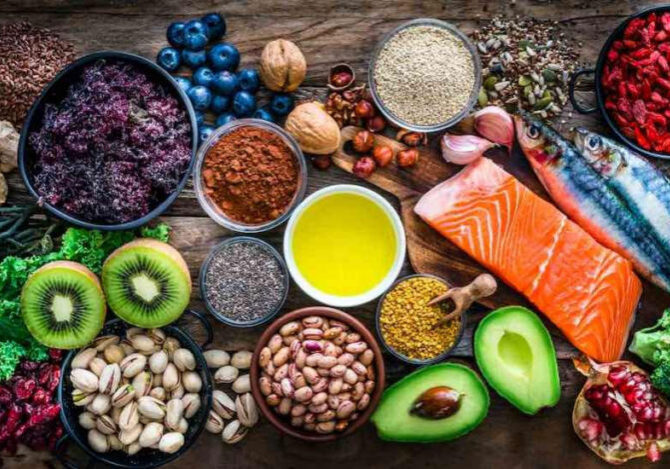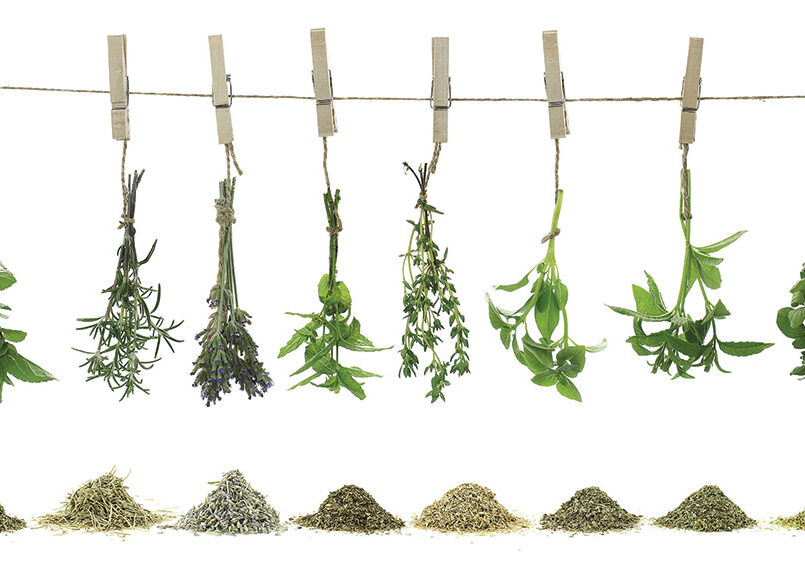Did you know that the current statistic is that 50 percent of women in the U.S. age 50 or older will break a bone due to osteoporosis? But that statistic in NOT set in stone. There are steps women and men can take to prevent osteoporosis starting well before age 50.
Osteoporosis is a gradual thinning of the bones causing low bone density, which may lead to fracture. Women typically start out with lower bone density than men, and loss of estrogen over time can increase the risk for osteoporosis.

Dietary calcium and bone health
You are probably aware of the importance of dietary calcium to maintaining strong bones. But how much calcium do you need to keep your bones healthy? Here are the recommended daily allowances for calcium:
- 0-6 months = 200 mg
- 7-12 months = 260 mg
- 1-3 years = 700 mg
- 4-8 years = 1000 mg
- 9-13 years = 1300 mg
- 14-18 years = 1300 mg
- 19-50 years = 1000 mg
- 51-70 years = 1000 mg for men; 1200 mg for women
- 71+ years = 1200 mg
With well-balanced nutrition, you may be able to get most of the necessary calcium from your diet. Nutritional labels on the food items you regularly purchase can give you part of the equation. They are based on a daily allowance of 1000 mg of calcium, so if the label says “25% of daily calcium”, you’re getting 250 mg of calcium per serving. With a little math, you’ll know how much calcium you need to make sure you get in addition to the foods you already eat.
What about milk as a good source of calcium?
Current studies suggest that cow’s milk may not be the best source of dietary calcium. You remember the Dairy Council slogan “Got Milk?” The dairy industry has for many years been promoting milk products as the best source of calcium. But studies consistently fail to show that a high intake of calcium in a diet helps prevent fractures. In the Harvard Nurses’ Health Study, researchers tracked 77,761 women between 34 and 59 years of age for 12 years and found that those who consumed the most calcium from dairy foods broke more bones than those who rarely drank milk.
Nutritionists agree that the best source of calcium comes from natural whole foods. Some of the best plant-based sources of calcium, according to the USDA Food Data Central are listed below.
Vitamin D and the sun
Vitamin D helps your body absorb calcium. We know that the sun is a great source of Vitamin D, but too much sun can lead to premature aging and skin cancer. Because many people don’t get the recommended dosage of vitamin D through sun exposure, it is important to get it through diet, and if necessary, dietary supplements.
Your goal should be:
- 600 international units (IU) of vitamin D per day if you are 70 or younger.
- 800 IU if you are 71 or older
Protein increases bone density
According to Kendall F. Moseley, M.D., endocrinologist and osteoporosis specialist at the Johns Hopkins Metabolic Bone Center, protein is important for bone health. Studies have shown that eating protein increases bone mineral density. The recommended daily protein intake is 0.4 grams per pound of body weight. So, if you’re a 140-lb. woman, you need about 60 grams of protein per day.
Exercise
Exercise helps stimulate the cells responsible for building bones. Weight-bearing and resistance exercises 3 or 4 days a week are best for promoting healthy bones. Walking is a great weight-bearing activity, as are running, dancing, aerobics, hiking and tennis. Resistance exercises use an opposing force, such as weights, an elastic band, or water, to strengthen your muscles and build bone. Having strong muscles and good balance may also help you avoid falls or minimize injury.
Melinda Anderson, PT, Co-Owner of The Rose Center for Rehabilitation, Hope and Wellness Inc in Redding recommends a simple group of exercises to do daily: sit to stand, wall push-ups, single leg stance while holding onto a countertop, and heel raises x 20 to challenge balance.
Healthy life choices
The choices you make, beginning as early as childhood, can affect your bone health in the future. To help prevent osteoporosis later in life, consider making the following lifestyle adjustments now.
- Quit smoking.
- Limit alcohol consumption.
- Maintain a healthy weight.
- Eat a well-balanced diet.
- Stay active.
Also keep in mind that some foods and beverages may promote calcium loss from your bones. Watch out for these calcium saboteurs:
- Sodium added to fast foods and at your own table.
- Wheat bran is high in phytic acid, which inhibits calcium.
- Caffeine reduces calcium absorption from foods and contribute to bone loss.
- Sodas often contain phosphorus which can harm bone health. Dark colas seem to have the most negative impact.
While a broken bone can be a medical emergency for anyone at any age, in the elderly a broken bone can directly lead to death relatively soon after the break. This is usually due to the slow healing process in older people, the person’s increased dependence on others, and an overall lowering of life quality. Making healthy lifestyle choices earlier in life, although sometimes challenging, can go a long way to preventing osteoporosis and the tragic consequences of bone fractures later in life. As always, consult your healthcare professional before embarking on major changes in your diet or exercise routines.
Here are some of the best plant-based sources of calcium.
Note that all calcium content listed comes from the USDA FoodData Central nutrient database.
Green Leafy Vegetables
- 1 cup loose kale = 53 mg
- 1 cup mustard greens = 64 mg
- 1 cup romaine lettuce = 21 mg
Beans & Legumes
- ½ cup canned kidney beans = 45 mg
- ½ cup chickpeas = 80 mg
- ½ cup cooked black beans = 40 mg
- ½ cup cooked lentils = 20 mg
- 2/3 cup green peas = 40 mg
Broccoli
- 1 cup raw broccoli florets = 35 mg
- ½ cup cooked chopped broccoli = 31 mg
Whole Grains
- 1 cup cooked quinoa = 31 mg
- 1 cup cooked oatmeal = 21 mg
- 1 cup cooked amaranth = 116 mg
Dried Fruit
- ¼ cup dried figs = 57 mg
- 5 dried apricots = 20 mg
- 1 box (28 g) raisins = 20 mg
Seeds and Nuts
- 2 Tbsp chia seeds = 177 mg
- 2 Tbsp sesame seeds = 176 mg
- 1 oz almonds = 75 mg
- 1 oz hazelnuts = 56 mg
- 1 oz tahini = 42 mg
Soy Foods
(go organic to steer clear of GMOs)
- ½ cup edamame = 80 mg
- 3 oz tofu = 150 mg
- 1 cup tempeh = 184 mg
Some calcium-rich plant foods, such as spinach, rhubarb, chard, and beet greens, also contain oxalic acid that can inhibit the amount of calcium absorbed from them. However, if you cook chard or beet greens with other greens such as kale or collards, the oxalic acid in the chard or beet greens is not enough to compromise the value of the calcium in those other greens. Another compound that inhibits calcium absorption is phytic acid, which is found primarily in beans. You can reduce phytate content in dried beans by soaking them for several hours, or overnight, before draining and cooking them in new water. Furthermore, extended soaking and cooking of beans also appears to increase the bioavailability of minerals like calcium.
Posted in: Health & Nutrition
Comment Policy: All viewpoints are welcome, but comments should remain relevant. Personal attacks, profanity, and aggressive behavior are not allowed. No spam, advertising, or promoting of products/services. Please, only use your real name and limit the amount of links submitted in your comment.
You Might Also Like...

On Pins And Needles – The Benefits Of Acupuncture
For a woman who admits being extremely afraid of needles, Patti Furnari is a huge fan of acupuncture. Having dealt with the debilitating pain of migraines for over 25 years, […]

Lying or Pretending? Teaching Kids to Tell the Truth
Somewhere around the age of three, when children begin to understand parents may not know what they actually did or didn’t do, your precious little angel may begin to tell […]

Two North State Organizations Focus On Healthy Eyes, Clear Vision
Watching a sunset, seeing the faces of children and loved ones, or the simple view of flower-filled grassy knolls are all pleasures in life that some people risk losing […]

What’s So Essential About Omegas?
Omega Essential Fatty Acids You’ve probably heard a lot about the importance of getting enough Omega-3 and Omega-6 acids in your diet. But what are they? And why are they […]




